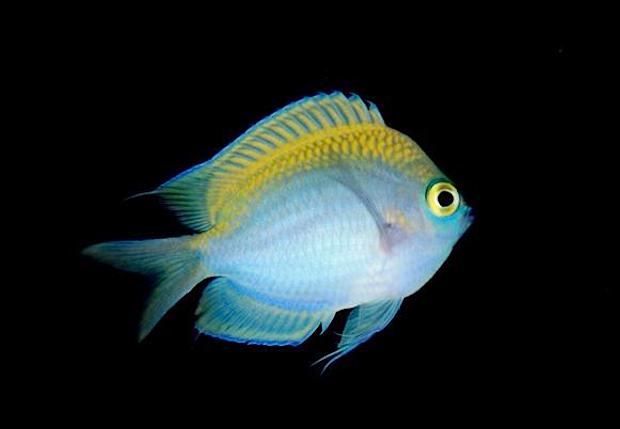Here at Reef Builders we are a fan of all things Chromis, and are especially fond of the deep water species such as the world famous Chromis abyssus. C. abyssus was described in 2008 together with four other species – Chromis circumaurea, C. degruyi, C. earina and the featured fish of this post, C. brevirostris. All five of these Chromis are deep water specialists, with C. brevirostris being found typically at 85m or more, except for two at 60m.

The etymology behind its species name stems from “brevis” meaning short, and “rostrum” for snout. Like its name sake suggests, living specimens of Chromis brevirostris prove to have a very rounded face and short snout. Since its publication in January of 2008, we’ve been fascinated by the holotype specimen which showed very fuzzy details of a beautiful dorsal pattern featuring golden-edged scales.
Unlike Chromis abyssus which was also described in the same paper, C. brevirostris did not enjoy quality air time on the documentary “Pacific Abyss – for which C. abyssus was named after” featuring Brian Green, Richard Pyle and other noteworthy scientists. A short clip of C. abyssus can be seen here with Centropyge abei.

We knew that gold rim had immense potential to look amazing in real life but the lack of living photos of the fish proved frustrating. We finally stumbled upon living photos in incredible quality of this fish from an underwater japanese blog takulog, and were we blown away. The filamentous extensions on its tail, dorsal, anal and ventral fins are reminiscent of other deepwater Chromis and Pseudanthias species, and the gold-edged scale pattern on the dorsal region is nothing short of spectacular.

According to its description paper, C. brevirostris ranges from Marshall Islands southward to Fiji, across the Caroline Islands from Puluwat to Palau, and south to Vanuatu. Where they are found, they can be abundant and can be found in numbers ranging from half a dozen to a dozen, as they feed on zooplankton floating in the water columns. Their wide range but propensity for very deep waters means that it is very unlikely this species finds itself in the trade by casual collectors. Specialised deep divers may collect this species with rebreathers.



